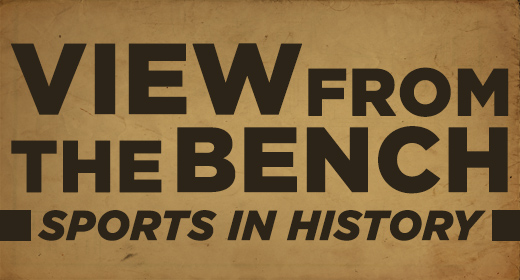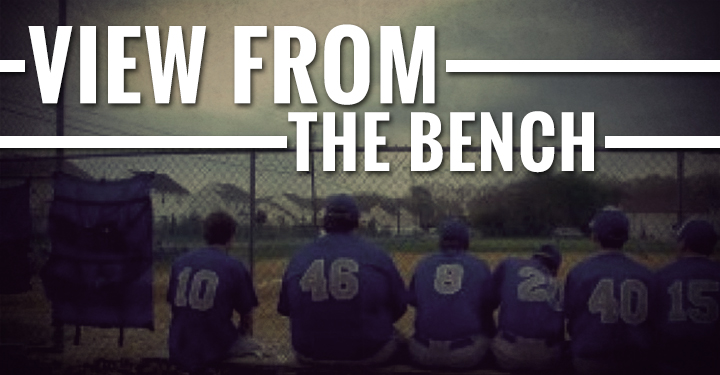March is very much like August. Fantasy sports heat up as owners track potential draft picks for the upcoming football (August) and baseball (March) seasons. Historically, those of us who live in the Valley of the Sun scour the rest of the country looking for sleepers or players who might be on the verge of a breakout season. We do so while often overlooking the guys in our own backyard not named Larry Fitzgerald or Paul Goldschmidt.
This past season, there were some surprise fantasy football players from the Cardinals’ camp who were not highly touted on any pre-season fantasy boards. This included Andre Ellington, who had combined rushing and receiving yards of over 1,000, to go along with four touchdowns, and Michael Floyd, who had more receiving yards than Larry Fitzgerald. Floyd also tallied five touchdowns. Well, I am here to tell you that there are some mid-to-late round fantasy gems on the D-Backs who I believe will be under the radar come draft day, particularly if you are in a public league with owners from around the country.
Miguel Montero is ranked by many of the experts to be in the range of between 15 and 20 among all major league catchers. This is largely a function of his catastrophic numbers in 2013. After a fairly hot first week of the 2013 season, the wheels came off for Miggy. He hit .200 in April and .198 in May. While he finished the season hitting .230, things never came together him. For 2014 and assuming the level of health at which he entered spring training, don’t be surprised if Miggy’s 2013 home run total increases by 50% and his RBI total more than doubles the numbers in 2013. A batting average increase of 40 to 50 points is a very reasonable possibility. If he comes close to these numbers, he would be lifted into the upper echelon of fantasy baseball catchers, making him a steal in later rounds.
At second base, Aaron Hill is no longer below the radar. Most sites rank him at about #10 among second baseman. If you can’t or elect not to use an early round pick on the likes of Robinson Cano, Jason Kipnis, Dustin Pedroia or speedster Jose Altuve, Hill can provide really good numbers in many different offensive categories. His cumulative numbers are what make him such a good value. Hill has shown that there is only one variable that could impact his 2014 fantasy value: his health. In 2012, Hill played a full season. In 2013, he played closer to one-half of a season due to injuries. His batting average remained fairly constant (.302 in 2012 and .291 in 2013). His homerun and RBI totals in 2013 were half of those in 2012, a direct correlation with having about one-half of the at-bats in 2013. If he puts in a full season in 2014, we could easily be looking at all-star numbers. Snagging a second baseman in the middle rounds who easily can give you 20+ homeruns, 85-95 runs scored, and 80+ RBIs with a batting average near .300 would either be a sleeper pick or even a steal in your public league draft.
For Martin Prado, 2013 was a “tale of two seasons.” He had difficulty adjusting to his move from Atlanta, and the numbers for the first half of the season showed that. But look at his second half performance. From the All-Star Break to the end of the season, Prado raise his batting average from .250 to .281, over a 30 point jump. During that same span, he raised his slugging percentage from .361 to .417. I believe that his performance in the second half of the 2013 season is the best indicator for this coming season. Ranked anywhere from 10-13 by many of the fantasy websites among third baseman, Prado can be a nice addition for a fantasy owner who does not jump in during early rounds in search of a third baseman. Also, most fantasy host sites have Prado available at second base and the outfield, making him a versatile addition to your roster.
And what about Chris Owings at shortstop? Last year at this time, the talk was about Did Gregorius, who batted .407 in April and .293 in May of last season. He fell like a rock thereafter, managing to hit only .234 in July, .197 in August and .182 in limited action in September. Kevin Towers has said that Didi is perhaps the frontrunner to start the season at shortstop and his superior glove skills may make that a reality. However, he is enough of an offensive liability that he may soon be lapped by Owings, who appeared in 20 late season games, batting .291 with a pair of stolen bases. He hasn’t yet gone yard, but Owings’ line drive power would still suggest a potential for double digit homeruns, if he gets sufficient at-bats. To be clear, it is too early to know whether Owings or Gregorius is atop the depth chart at shortstop, and with Nick Ahmed moving up the minor league ranks, he may replace both of them. Also, beware of a spring training trade involving one of the D-Backs’ shortstops, given the organizational depth that also includes Cliff Pennington. But as a late round flyer in deeper leagues, Owings could surprise some people.
Mark Trumbo is not getting much love from the experts, ranking him in the late 20’s or into the 30’s among all major outfielders. But those of us from around here know how the hot summer air allows fastballs to be lifted into orbit. Trumbo has freaky strength, and I would not be surprised to see him go stride for stride with Paul Goldschmidt in many stats, other than batting average, which for Trumbo is likely to hover around the .250 range. Drafting an outfielder in the middle rounds who may eclipse 40 homeruns and 100 RBIs is truly a value pick.
AJ Pollock is penciled in to be the everyday starter in centerfield. To me, he has similar value to Aaron Hill. There is not any jump-off-the-page statistical dominance in any category, but he may provide serviceable numbers across the board. He is likely to put up double digit numbers in homeruns and far surpass his 2013 stolen base totals (12), even perhaps before the all-star break. It is noteworthy that his batting average in September of 2013 was .352. His end of season performance allowed the D-Backs to ship off Adam Eaton, who put up monster numbers in August of 2013, but dropped off the cliff in September.
This year’s D-Backs will win games, and I believe that they will top the 81-81 record we have seen in two consecutive seasons. The question is, who will post those victories? According to many website pitching rankings, the answer appears to be “nobody in particular.” For example, the highest ranked D-Back starting pitcher on Yahoo Sports is Patrick Corbin, and he is not even in the top 50. He is followed by Wade Miley (consensus ranking of 83) and Trevor Cahill, who does not even break the top 100. There is no mention of Bronson Arroyo who, in 2013, did not miss one of his 32 scheduled starts, and went five or more innings in 28 of them. Don’t be surprised if he ends up among the team leaders in innings pitched, ERA and wins by the time the season ends. When you get deeper into your draft, don’t overlook any of these guys for your pitching staff.
The D-Backs all-time saves leader is Jose Valverde, who had 98 career saves as a D-Back. Every few years, the team has thought it landed their long term solution at closer, with guys such as Matt Mantei, JJ Putz, and even Chad Qualls. None of them grabbed the mantel. So, history tells us that this year’s “guy,” Addison Reed, may drift off like his predecessors. I am here to tell you that this time it is different. Reed has got what it takes to be among the league leaders in saves. His numbers in his two major league seasons are already better than every D-Back closer in team history, excepting Valverde and Putz. He is young and appears to have the demeanor that is a must for every closer. There are closers to consider in your draft before Reed but don’t wait too long into the “run on closers” to nab Reed.
But the pitcher not to forget in the draft, particularly if it is a keeper-league, is Archie Bradley. The addition of Bronson Arroyo to the starting rotation has allowed the D-Backs to remain patient with Bradley’s progression to the big leagues. In his two full minor league seasons, Bradley has won 26 games against only 11 losses, has a cumulative ERA of 2.76 and averages more than one strikeout per inning. There is no certainty that he will debut any time soon in Phoenix, but a June call-up is not out of the question. Predictions are that once he arrives, he will never leave. Do not leap at Bradley the way others jumped in on Stephen Strasburg in 2010 fantasy drafts, but one of your last picks can focus on him since it is not yet national news about what a gem he may become.
So there you have it—some thoughts about our hometown talent. Enjoy the draft but while you do so, it is also ok to “root, root, root for the home team.”
Related posts:
Bruce Richard
Arizona resident for 30+ years and avid sports fan since as long as I can remember. I possess a lifelong passion for sports and it's great traditions.

